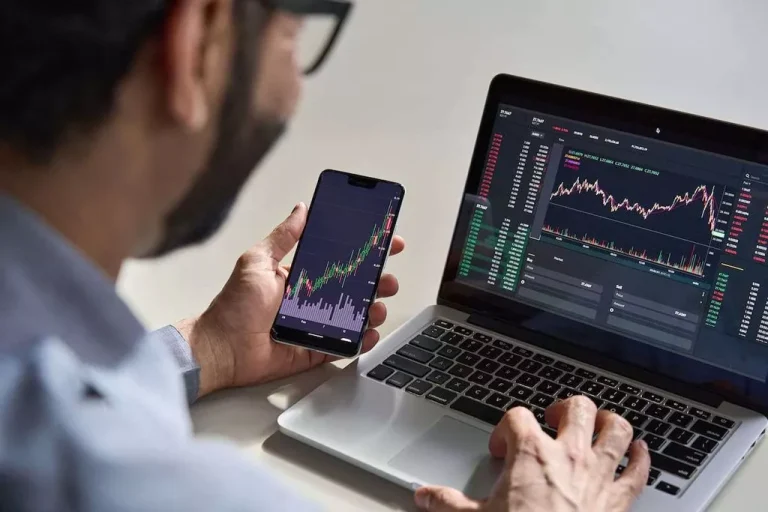Content
While PFOF can provide better liquidity and competitive pricing, it can also lead to potential conflicts of interest and information leakage. PFOF involves a complex set of relationships between different market participants. The main parties involved are the brokerage firm, the client, and the market maker or other liquidity provider. Understanding PFOF is crucial for both novice and experienced traders, as it directly impacts the cost of trading and the quality https://www.xcritical.com/ of trade execution. This glossary entry aims to provide a comprehensive understanding of PFOF, its implications, and its role in the trading industry. Meanwhile, brokers are benefitting because they’re getting paid to execute orders for customers instead of paying an exchange to do so.
Payment for order flow (PFOF) and why it matters to investors
- Typically, the market maker will offer a better price than is available on a public exchange.
- Plans are self-directed purchases of individually-selected assets, which may include stocks, ETFs and cryptocurrency.
- Of course, in this situation, our apple is stock or options (most likely to be options) and the apple vendors are market makers.
- While the practice has been widely adopted in the United States, it has been banned in other jurisdictions due to concerns over conflicts of interest and execution quality.
- Deposits into this account are used to purchase 10 investment-grade and high-yield bonds.
- A PFOF trader is just another word for a broker-dealer who uses PFOF to execute retail orders.
- PFOF became the subject of renewed debate after a 2021 SEC report on retail investor mania for GameStop (GME) and other meme stocks.
Buying one national currency while selling another is known as forex trading. Even though by law brokers most get us Cryptocurrency exchange the best fill, we have no transparent way of knowing for certain whether or not they do. All we do know is that a PFOF ban will most likely hurt the retail investor.
PFOF Ban: Win-Win for Hedge Funds?
Fast forward to today, and pfof meaning nearly every major brokerage firm on Wall Street offers commission-free trading. Most brokers will pick the market maker that offers you the best price. But in the PFOF model, the market maker will pay the broker to handle these trades. These low costs come in part from a controversial practice called payment for order flow (PFOF). While it reduces your upfront costs, research shows it might actually leave you worse off due to poor trade execution.
Should you choose an investment app that sells your trade orders?

By the late 2010s, many brokers had eliminated training fees altogether. Market makers, who act as buyers and sellers of securities on behalf of an exchange, compete for business from broker-dealers in two ways. First, they compete using the price they can buy or sell for; and, second, they consider how much they are willing to pay to get the order. PFOF is used by many zero-commission trading platforms on Wall Street, as its a financially viable option and allows them to be able to continue offering trades with no commissions.
Increase in market liquidity and competition

Public Investing can change its maintenance margin requirements at any time without prior notice. If the equity in your margin account falls below the minimum maintenance requirements, you may be required to deposit additional cash or securities. If you are unable to do so, Public Investing may sell some or all of your securities, without prior approval or notice. For more information please see Public Investing’s Margin Disclosure Statement, Margin Agreement, and Fee Schedule. Investors ultimately realized there was a fee hidden in their sell order, and it came in the form of a lower market value for the executed share.
A market maker is an individual or financial firm committed to making sure there are securities to trade in the market. Market makers are essential to maintaining an efficient market in which investors’ orders can be filled (otherwise known as liquidity). This is intended to allow others to act on these orders, providing greater competition and potentially better results for investors. For instance, regulations already require brokers to search for the best trades for their clients. While some have suggested that the SEC should do more on this front, it’s not too difficult for regulators and individual clients to assess because the data for trades executed can be compared with the posted spreads.

Broker-dealers like Robinhood, Charles Schwab, and TD Ameritrade traditionally had several sources of revenue. They received fees from their customers in the form of trading commissions, sales commissions on mutual funds and other products, margin account fees, and investment advisory fees. However, that has changed with the advent of commission-free trading. A Bond Account is a self-directed brokerage account with Public Investing.
Other costs, such as the bid-ask spread and the potential impact of poor execution quality, should also be taken into account. In some cases, these costs may outweigh the benefits of zero-commission trading. One of the main advantages of PFOF for traders is the reduction in trading costs. By earning revenue through PFOF, brokers can afford to waive their commission fees, offering zero-commission trading to their clients.
There are major differences in how market makers and other “wholesalers” compensate brokers for executed trades. Not meeting those two criteria is how Robinhood wound up squarely in the sights of the SEC. In December 2020, the agency charged Robinhood for failing to disclose the payments it received for routing its clients’ orders to market makers between 2015 and 2018. The SEC also said Robinhood misled its customers by not ensuring that they got the best execution on those trades. Options.Options trading entails significant risk and is not suitable for all investors.
The pushback on payment for order flow is proof that we dont have to take stock market norms at face value. As a community, investors on the Public app are able to tip on their own accord, or save the funds while they execute trades directly with the exchange. The same cannot be said for all no-fee brokers, but that could change.
Traders should stay informed about the practices of their brokers and the implications of these practices for their trading activity. A few outsiders (wholesale market makers like Citadel and Virtu) got wind of the wide spreads in the apple market. One day, they are standing next to the major vendors, giving you their own markets. The SEC oversees broker execution standards and guards against actions that might disadvantage investors, including offering misleading information.
Investment returns and principal value will fluctuate such that an investment, when redeemed, may be worth more or less than the original cost. Its when a broker-dealer is paid by a market maker to route orders to the market maker. Members of the Public.com community can opt to leave a tip to help pay for the cost of trade execution. To fully understand PFOF, you need to understand how the bid-ask spread works.
And customers can be happy that they get a better price than they were hoping to get. The genesis of Rule 606(a) can be traced back to increased complexity in how orders were routed and executed, raising concerns about transparency and fairness, after the increased usage of electronic trading platforms. In response, the SEC introduced Rule 606 (formerly Rule 11Ac1-6[21]) under the Securities Exchange Act of 1934, aiming to address these concerns. The rule has undergone several amendments to keep pace with the evolving market structure, technological advancements, and trading practices. In-house exchanges may be established, and investors may have to pay a fee to trade on these exchanges.
Nowadays, investors are raising the bar for brokerages, urging transparency in business practices so they know how a company is profiting off of them and whether or not they like it. In 2020, four large brokerage institutions received a total of $2.5 billion in revenue from PFOF alone, making it one of the largest money generators for brokerage firms. That number was up from $892 million the year prior, meaning PFOF profits nearly tripled in just one year. PFOF is used to transfer some of the trading profits from the market makers back to the brokers. The ultimate purpose of PFOF is for liquidity, not necessarily to profit off client orders. As the SEC continues to review the practice of PFOF, we will likely see increased regulation and potential changes to how brokers and market makers operate.
